Complete the Data for All the Baby Dragons Produced by All the Students in the Following Chat
5.1: Dragon Genetics Protocol (Part i)
- Page ID
- 25102
Introduction
In this activity, you will study the patterns of inheritance of multiple genes in (imaginary) dragons. These dragons have ii pairs of homologous chromosomes in each cell. Yous will run across that since genes are carried on chromosomes, the patterns of inheritance are determined past the behavior of chromosomes during meiosis and fertilization.
The Law of Contained Assortment—Inheritance of Genes on Unlike Chromosomes
For this activity, we volition only consider one gene on each chromosome. These genes are described in the following table.
| Ascendant Alleles | Recessive Alleles | |
| Chromosome 1 | W = has wings | due west = no wings |
| Chromosome 2 | H = big horns | h = modest horn |
The mother dragon is heterozygous for the wing factor (Ww) and the horn factor (Hh). The father is homozygous recessive for the wing gene (ww) and the horn gene (hh).
What phenotypic traits will each parent have? (Phenotypic traits are the observable actual characteristics.) Depict the appropriate characteristics for each parent.

Review of Inheritance of Single Genes
Draw a Punnett Square to show the inheritance of the horn alleles for a mating between this mother and male parent.
On average, what fraction of the infant dragons volition have big horns? Predictions of Inheritance of Two Genes on Different Chromosomes
To predict the inheritance of the wing and horn genes, you kickoff need to determine the genotypes of the eggs produced by the heterozygous (WwHh) mother dragon and the sperm produced by the homozygous (wwhh) father dragon. Considering both the wing and horn genes, what different genotypes of eggs could the heterozygous mother dragon produce? Utilize the figure below to answer this question.
Observe that, in a cell that is prepared for meiosis 1, the homologous chromosomes are always paired with each other, but the specific arrangement of the chromosomes can differ. Describe this difference and the effect that this has on the genotypes of the eggs produced.
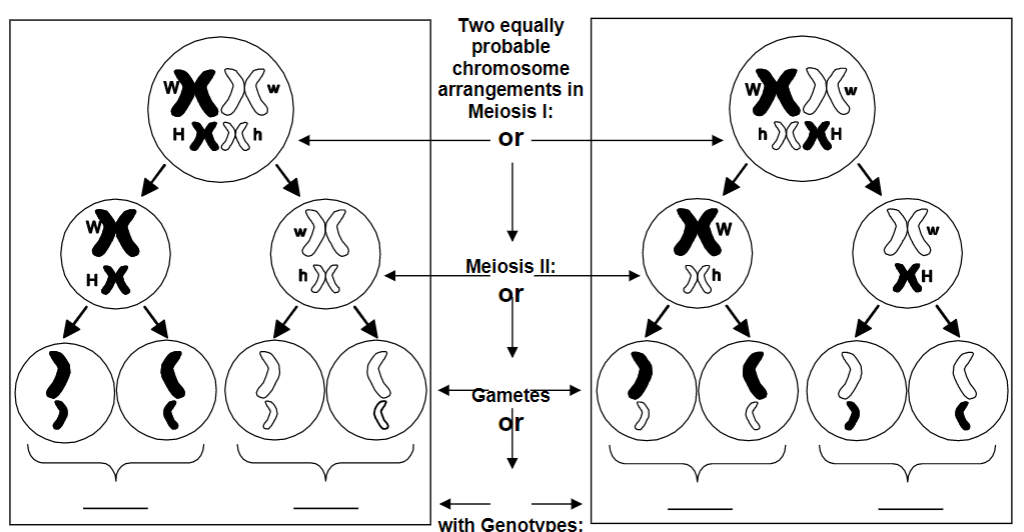
What genotypes or genotype of sperm tin can the homozygous (wwhh) begetter dragon produce? Draw a diagram to show how meiosis would occur in the male parent, starting with a diploid cell prepare to undergo meiosis ane and ending with four haploid sperm.
The next step in predicting the inheritance of the wing and horn genes is to predict the effect of fertilization betwixt these eggs and sperm. In the following chart, label the gene on each chromosome in each blazon of zygote that could exist produced past a mating betwixt this female parent and father. Then, fill in the genotypes of the baby dragons that result from each zygote and sketch in the characteristics of each babe dragon to testify the phenotype for each genotype.
| Female parent (WwHh) | |||||
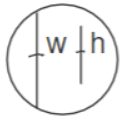 | 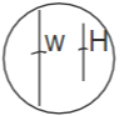 | 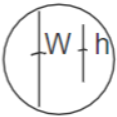 | 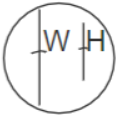 | ||
| Father (wwhh) | 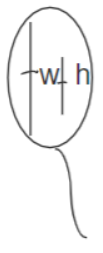 | Zygote Genotype of Baby = ___________________ Phenotype: | Zygote Genotype of Baby = ___________________ Phenotype: | Zygote Genotype of Baby = ___________________ Phenotype: | Zygote Genotype of Baby = ___________________ Phenotype: |
This type of mating involving ii unlike genes is more typically shown as a Punnett square with four rows and four columns (see below). Notice that, because the begetter is homozygous for both genes, all his sperm have the same genotype, so all four rows are identical.
| Female parent (WwHh) | |||||
| wh | wH | Wh | WH | ||
| Begetter (wwhh) | wh | wwhh | wwHh | Wwhh | WwHh |
| wh | wwhh | wwHh | Wwhh | WwHh | |
| wh | wwhh | wwHh | Wwhh | WwHh | |
| wh | wwhh | wwHh | Wwhh | WwHh | |
Considering simply the infant dragons with wings, what fraction practice you expect to take large horns? (To answer this question, it may be helpful to begin by shading in the two columns of the higher up Punnett foursquare that include all the baby dragons with wings.)
Considering only the baby dragons without wings, what fraction do you await to accept large horns?
Do you expect that infant dragons with wings and without wings will exist equally likely to have big horns?
Procedure to Test Inheritance of Ii Genes on Unlike Chromosomes
To test whether baby dragons with wings and babe dragons without wings volition exist as probable to have large horns, you will carry out a simulation of the simultaneous inheritance of the genes for wings and horns. Since the begetter is homozygous (wwhh), you know that all of the male parent'south sperm will be 'wh'. Therefore, to decide the genetic makeup of each baby dragon produced in your simulation, you will but demand to determine the genetic makeup of the egg which is fertilized to get the zygote that develops into the babe dragon. During meiosis, each egg randomly receives i from each pair of homologous chromosomes. Your simulation volition mimic this process.
For this simulation, each of the mother's pairs of homologous chromosomes volition be represented by a popsicle stick with the genes of one chromosome shown on i side and the genes of the other homologous chromosome shown on the other side. Since the mother dragon is heterozygous for both genes (WwHh), you will have one Popsicle stick representing a pair of homologous chromosomes which are heterozygous for the wing factor (Ww) and some other Popsicle stick representing a pair of homologous chromosomes which are heterozygous for the horn gene (Hh).
one. Agree 1 Popsicle stick in each hand about half dozen inches to a higher place the desk-bound. Hold each Popsicle stick horizontally with i side facing toward you lot and the other facing away (with one border of the Popsicle stick on the bottom and the other edge on the meridian). The 2 Popsicle sticks should be lined up end-to-stop, simulating the way pairs of homologous chromosomes line upwards in the center of the cell during the start meiotic partitioning. Simultaneously drop both Popsicle sticks on the desk. The side of each Popsicle sticks that are upward represent the chromosome that is contained in the egg. This indicates which alleles are passed on to the baby dragon. Put an 'I' in the appropriate box in the chart below to record the genotype of the resulting baby dragon.
| Mother (WwHh) | |||||
| wh | wH | Wh | WH | ||
| Father (wwhh) | wh | Genotype of baby = wwhh Number of babies with this genotype = ______ | Genotype of baby = wwHh Number of babies with this genotype = ______ | Genotype of infant = Wwhh Number of babies with this genotype = ______ | Genotype of baby = WwHh Number of babies with this genotype = ______ |
2. Echo step one three times to make and record iii more infant dragons.
Summary and Interpretation of Data
one. Compile the data for all the baby dragons produced past all the students in the following chart.
| Mother (WwHh) | |||||
| wh | wH | Wh | WH | ||
| Father (wwhh) | wh | Genotype of baby = wwhh Number of babies with this genotype = ______ Phenotype: Wings_____ or no wings_____ Horns big_____ or small_____ | Genotype of baby = wwHh Number of babies with this genotype = ______ Phenotype: Wings_____ or no wings_____ Horns big_____ or small_____ | Genotype of infant = Wwhh Number of babies with this genotype = ______ Phenotype: Wings_____ or no wings_____ Horns big_____ or small_____ | Genotype of babe = WwHh Number of babies with this genotype = ______ Phenotype: Wings_____ or no wings_____ Horns big_____ or small_____ |
2. Do any of the baby dragons with wings have small horns?
Does either parent have the combination of wings and small horns? (See the Introduction part)
How did this new combination of characteristics (wings and small horns) ascend in some of the babe dragons? (Your answer will include events during meiosis and fertilization, and so you lot may find it helpful to review the diagram of meiosis on the "Review of Inheritance of Single Genes" department and the chart of fertilization.)
3. On page 3, you used your understanding of meiosis and fertilization to predict whether infant dragons with wings and without wings would be every bit likely to have bighorns. What was your prediction? Employ the grade results shown above to complete the following table.
| Fractions that take Large Horns | ||
| Baby Dragons with Wings | Baby Dragons without Wings | |
| Results | ||
Do your results match your prediction?
This instance illustrates the Police force of Contained Assortment, which states that, if two genes are on different chromosomes, then the alleles for these genes separate independently of each other during the formation of eggs or sperm. Therefore, the traits determined past these two genes are inherited independently. For example, the fly factor and the horn gene are located on unlike chromosomes so they are inherited independently.
Genes on different chromosomes are inherited independently of each other considering each pair of homologous chromosomes lines upwardly independently of the others when the chromosomes line upward in the center of the jail cell near the beginning of the first meiotic division. Consequently, when the pairs of homologous chromosomes separate during the showtime meiotic sectionalisation, the chromosome that has an 'H' allele is as likely to end upward in the same egg with the chromosome that has the 'W' allele or with the chromosome that has the 'west' allele. (This is illustrated in the figure on page 2.) In this activity, when you lot dropped the ii chromosome Popsicle sticks, each stick independently landed with one particular side up, and this corresponds to the independent assortment of chromosomes and their alleles during meiosis.
iv. To illustrate how the Constabulary of Independent Assortment applies to humans, consider the inheritance of the recessive allele for sickle jail cell anemia (s, located on chromosome 11) and the SRY gene. The SRY gene is located on the Y chromosome and the SRY gene results in male development. This explains why a person who has both an X chromosome and a Y chromosome in each cell is a male, and a person who has two X chromosomes and no Y chromosome is a female.
Suppose that a male parent and mother are both heterozygous for the allele for sickle prison cell anemia (Ss). The following Punnett square shows the inheritance of the sickle cell and SRY genes, with X representing the X chromosome with no SRY cistron and Y representing the Y chromosome which does take an SRY gene. Consummate the Punnett square.
| Mother (SsXX) | |||||
| SX | sX | SX | sX | ||
| Father (SsXY) | SX | ||||
| sX | |||||
| SY | |||||
| sY | |||||
Based on this Punnett foursquare, what fraction of the sons will have sickle jail cell anemia?
What fraction of the daughters will have sickle prison cell anemia?
Is there any sex difference in the risk of inheriting sickle cell anemia?
The Law of Independent Assortment applies to genes which are located on different chromosomes, but it does non apply to genes which are located near each other on the aforementioned chromosome, as you lot volition encounter in the next activity.
Genetic Linkage
Inheritance of Genes which are Close Together on the Same Chromosome
Plain, real chromosomes accept more than one gene each. In this action, y'all volition analyze the inheritance of multiple genes which are close together on the same chromosome. We will consider three genes on Chromosome 1 and one gene on Chromosome 2, as indicated in the following table.
| Dominant Alleles | Recessive Alleles | |
| Chromosome i | Due west = Has Wings F = Burn down-animate N= Long Fangs | due west = No Wings f = No Fire-breathing northward= Brusque Fangs |
| Chromosome 2 | H = Big Horns | h = Small-scale Horns |
For this activity, the begetter is heterozygous for each of these genes (WwFfNnHh), and the mother is homozygous for the recessive alleles (wwffnnhh). For the three genes on chromosome 1 for the father, the dominant alleles are all located on one chromosome and the recessive alleles are all located on the other homologous chromosome.
Chromosome 1 pairs for the father and mother look like this.

Describe the genes for the Chromosome 2 pairs for the father and mother.

1. In the figures beneath, describe the phenotypes of the heterozygous father and the homozygous mother.


2. What different combinations of alleles can be found in the different types of sperm that the heterozygous (WwFfNnHh) dragon male parent can produce? To reply this question, complete the genotypes in the figure below. (It may assist to notation that the alleles on the big white chromosomes are w, f, and n.)
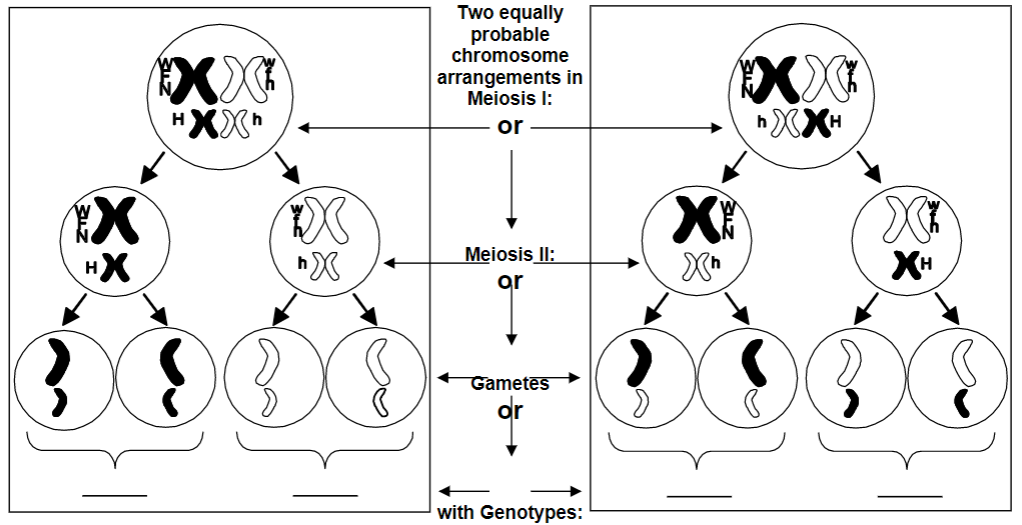
How many unlike combinations of alleles can be establish in the eggs produced by the homozygous (wwffnnhh) mother dragon? Show the genotype(s) of the mother's eggs.
three. Depict a Punnett foursquare to evidence the genotypes of the baby dragons that could be produced by this begetter and mother. You may want to use the popsicle sticks representing the father's and mother'due south chromosomes to assist you visualize the different combinations of alleles.
Based on this Punnett foursquare, will any of the baby dragons have the ascendant allele W for wings, but not the ascendant allele F for fire-animate?
Will any of the baby dragons have the dominant allele West for wings, merely non the ascendant allele H for big horns?
Explain the departure in results for the inheritance of the fly and fire-animate genes vs. the inheritance of the fly and horn genes.
Genes that are located near each other on the same chromosome will move together during meiosis and fertilization. Therefore, the inheritance of these genes is linked. This is referred to every bit genetic linkage. As discussed previously, genes on unlike chromosomes are inherited independently, in accordance with the Police force of Independent Array.
four. In the chart below, point the four possible genotypes of the infant dragons produced past this father and female parent, and draw the phenotype for each genotype.
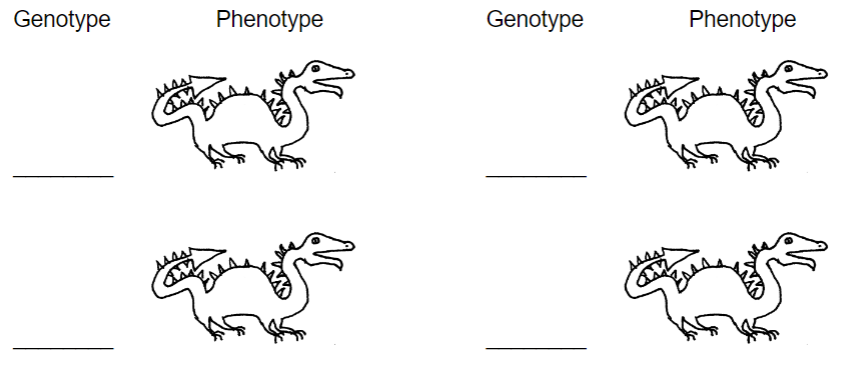
5. Volition any of the baby dragons with wings have short fangs?
Will any of the fire-breathing baby dragons have short fangs?
Volition any of the fire-breathing baby dragons take no wings?
Explain how genetic linkage accounts for these results.
half dozen. Based on your drawings in the above chart and the Punnett square on the previous page, respond the following two questions.
On boilerplate, what fraction of the baby dragons with large horns volition exist fire-breathers?
On average, what fraction of the babe dragons with small horns volition exist burn down-breathers?
Utilise the principles of genetics, including the Law of Independent Assortment, to explain these observations.
Discussion
The principles of inheritance in these dragons also utilise to inheritance in humans, other animals, and plants. However, inheritance in humans, other animals, and plants is much more than circuitous than inheritance in these dragons.
First, list the 2 principles of inheritance illustrated by this Dragon Genetics action.
What are some additional complexities of inheritance in humans, other animals, and plants? Discuss the following questions.
- Genetic linkage is very strong for genes which are located close to each other on the same chromosome. What happens in the case of two genes which are far apart on the same chromosome?
- Are all alleles either completely dominant or completely recessive?
- Practice whatever genes have more than two alleles?
- Does each factor influence merely one phenotypic trait?
- Is each phenotypic trait influenced by only 1 gene (i.eastward. one pair of alleles on a pair of homologous chromosomes)?
- For the genes that are on the X chromosome in humans and other mammals, what are the differences in inheritance for males vs. females?
Source: https://bio.libretexts.org/Learning_Objects/Laboratory_Experiments/General_Biology_Labs/BCCC_MASTER_Biology_PLC/Biology_101/05._Dragon_Genetics/5.1:_Dragon_Genetics_Protocol_%28Part_1%29

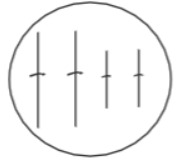
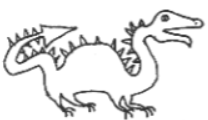
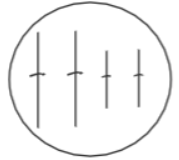
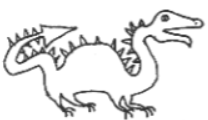
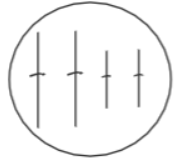
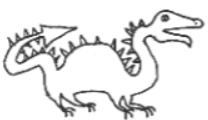
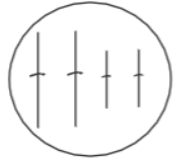
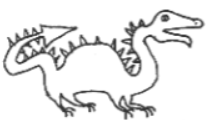
0 Response to "Complete the Data for All the Baby Dragons Produced by All the Students in the Following Chat"
Post a Comment